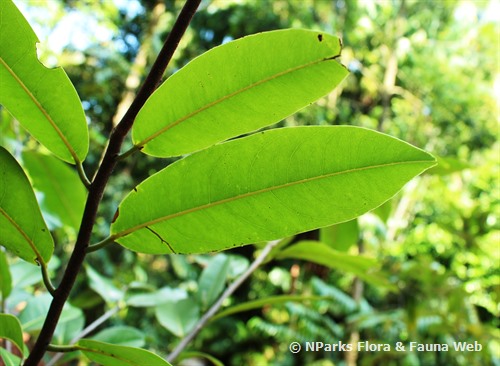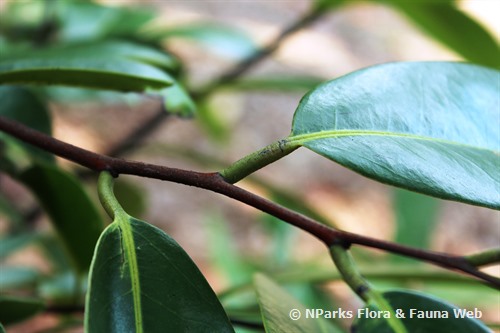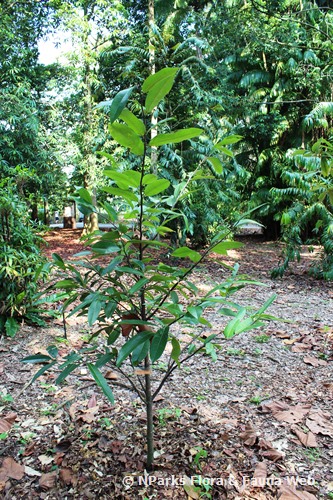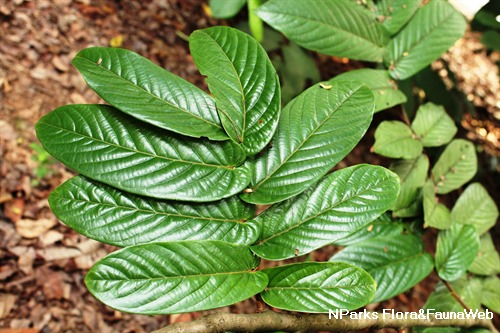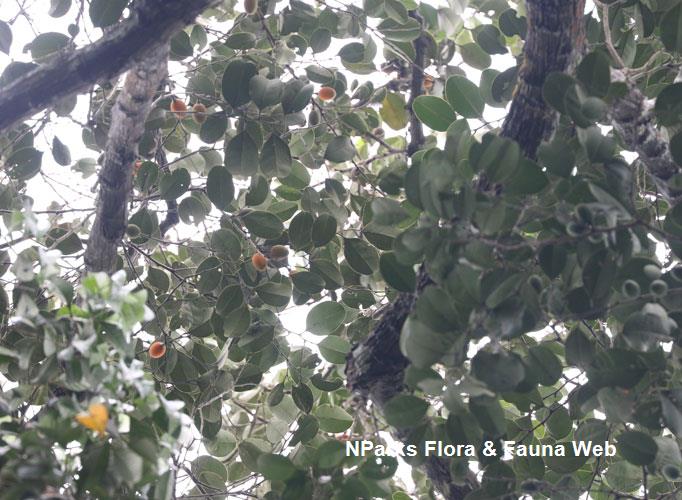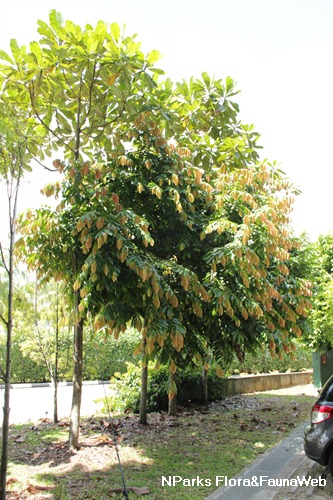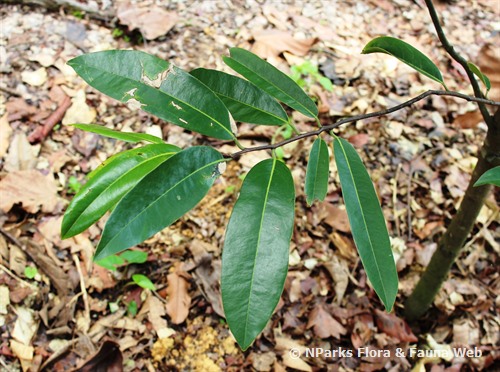
Back
Diospyros pendula Hasselt ex Hassk.
| Family Name: | Ebenaceae |
| Synonyms: | Diospyros fuliginea Hiern, Diospyros oleifolia Wall. ex Kurz, Diospyros penduliflora Zoll. |
Name
Classifications and Characteristics
| Plant Division | Angiosperms (Flowering Seed Plants) (Dicotyledon) |
|---|---|
| Plant Growth Form | Tree (Medium (16m-30m)) |
| Lifespan (in Singapore) | Perennial |
| Mode of Nutrition | Autotrophic |
| Maximum Height | 20 m |
Biogeography
| Native Distribution | Myanmar, Thailand, Peninsular Malaysia, Borneo and Java. |
|---|---|
| Native Habitat | Terrestrial |
| Preferred Climate Zone | Tropical, Sub-Tropical / Monsoonal |
| Local Conservation Status | Non-native (Horticultural / Cultivated Only) |
Description and Ethnobotany
| Growth Form | A medium sized tree up to 20 m tall. |
|---|---|
| Foliage | Its alternate, stalked leaves are oblong to oblong-obovate, up to 25 cm long and 8 cm wide. Fruits: Fruits are ovoid to depressed-globose, measuring up to 2.5 cm in diameter. |
| Habitat | Trees can be found in lowland mixed dipterocarp forest. |
| Etymology | Diospyros is derived from two Greek words, dios (divine) and pyros (wheat), meaning divine wheat (fruit). |
Landscaping Features
| Desirable Plant Features | Ornamental Fruits |
|---|---|
| Landscape Uses | Parks & Gardens |
Plant Care and Propagation
| Light Preference | Full Sun |
|---|---|
| Water Preference | Moderate Water |
| Plant Growth Rate | Moderate |
| Rootzone Tolerance | Well-Drained Soils, Fertile Loamy Soils |
| Propagation Method | Seed |
Foliar
| Foliage Retention | Evergreen |
|---|---|
| Mature Foliage Colour(s) | Green |
| Foliar Type | Simple / Unifoliate |
| Foliar Arrangement Along Stem | Alternate |
Image Repository
Others
| Master ID | 32308 |
|---|---|
| Species ID | 6716 |
| Flora Disclaimer | The information in this website has been compiled from reliable sources, such as reference works on medicinal plants. It is not a substitute for medical advice or treatment and NParks does not purport to provide any medical advice. Readers should always consult his/her physician before using or consuming a plant for medicinal purposes. |

